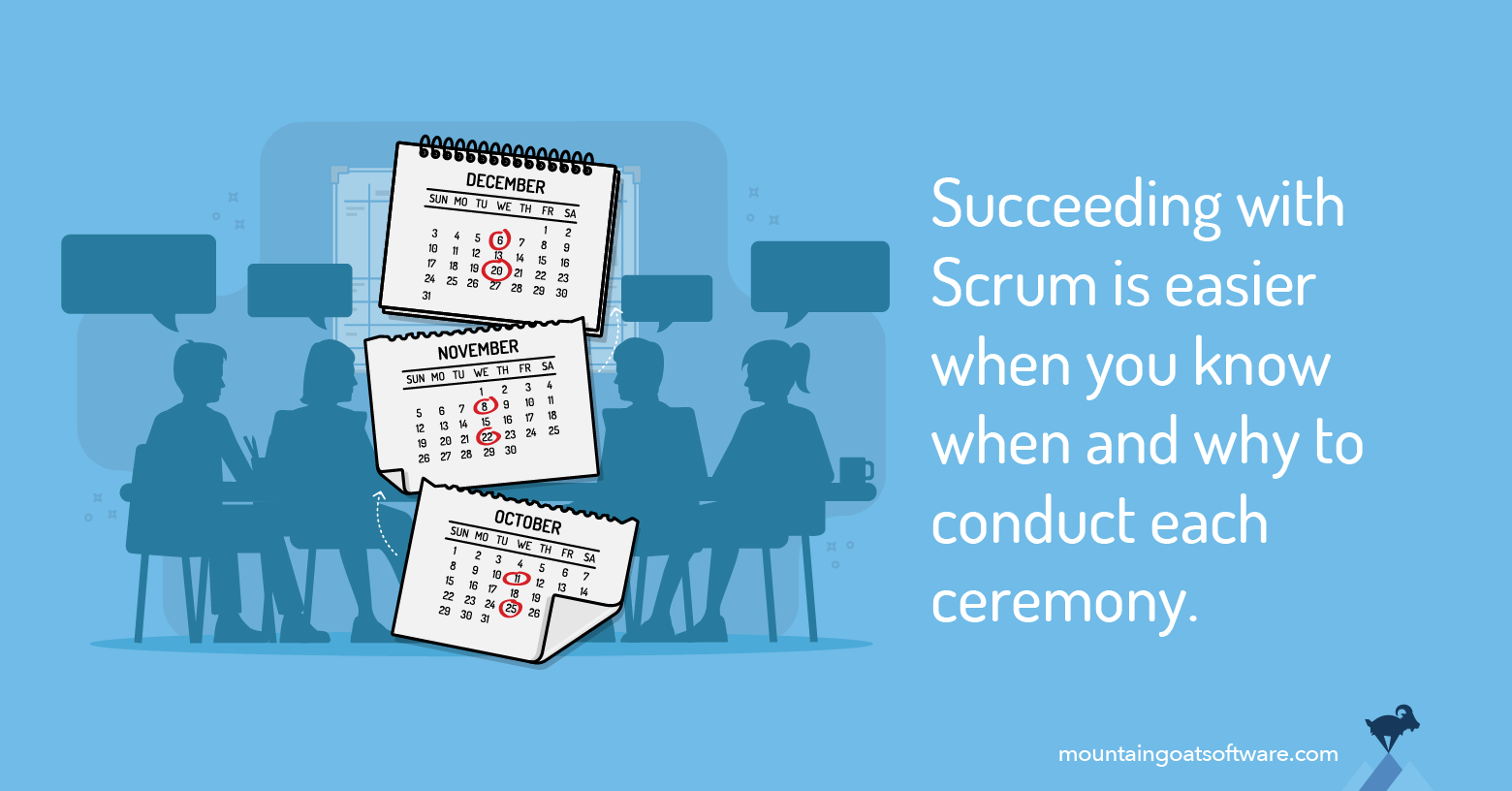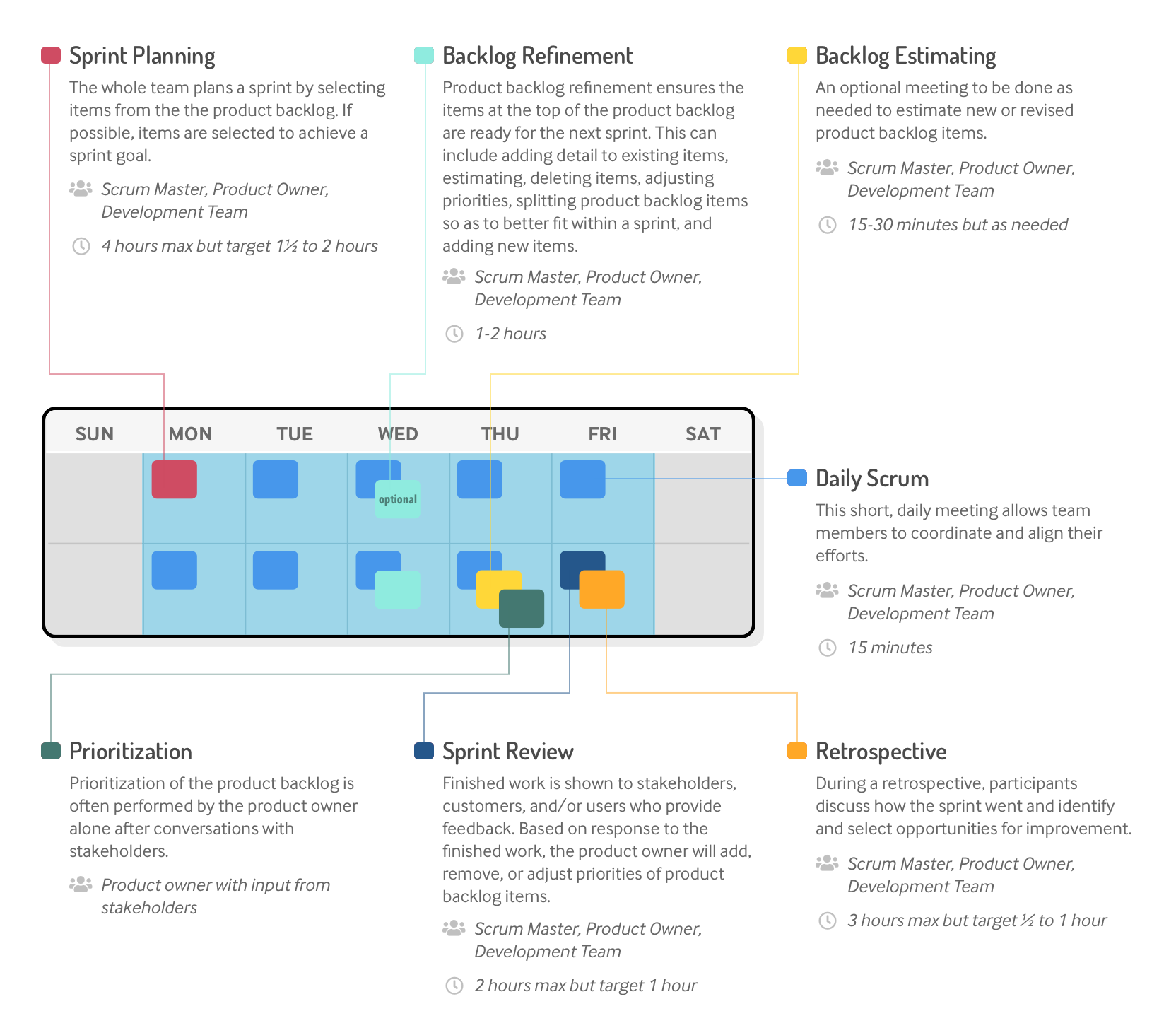What Happens & When During a Sprint by Mike Cohn
Referred Link - https://www.mountaingoatsoftware.com/blog/what-happens-when-during-a-sprint

Successful Scrum implementations involve a handful of important ceremonies. This includes sprint planning, the sprint review, the daily scrum, the sprint retrospective and more.
There’s often a lot of confusion about who participates, when these ceremonies are conducted, how long each can take, the purpose of the ceremony, and more.
To reduce the confusion, we’ve created infographics that answer each of these questions for sprints of 1-, 2-, 3- and 4-weeks.

The Sprint Planning Ceremony
Daily Scrum
What did I do yesterday to help achieve the sprint goal? What will I do today to achieve the sprint goal? What, if anything is impeding or blocking progress toward the sprint goal?









0 comments